Romneya coulteri and Romneya trichocalyx
Pronunciation: “ma (mud) – TIL (until) – i (sit) – ja (hop)”
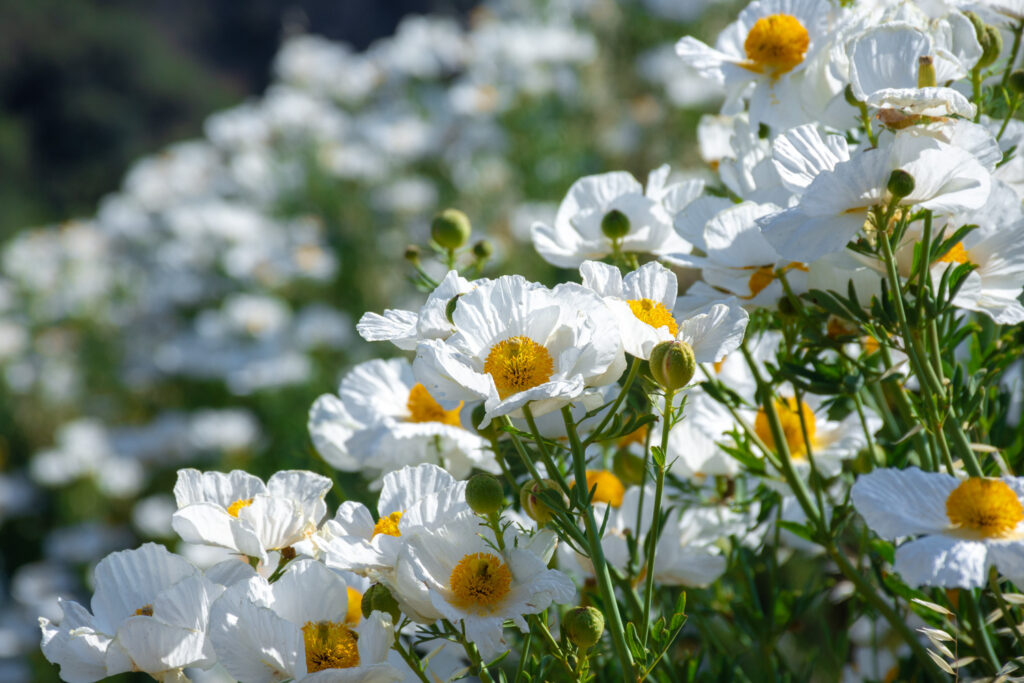
California’s second most well-known poppy (behind the California poppy, of course) also happens to have the largest flower of any native plant in the state. The Matilija poppy, occasionally called the fried egg plant, has long been beloved both in the wild and as a showy garden ornamental.
Description
There are actually two species of Matilija poppy that grow in and around the Los Padres National Forest: Coulter’s Matilija poppy (Romneya coulteri) and hairy Matilija poppy (R. trichocalyx). If you have Matilija poppies in your yard or garden, chances are it’s R. coulteri. Both are very similar in appearance—they can grow to nearly 10 feet and have deeply lobed, gray-green leaves similar to many other members of the poppy family. They are usually considered perennial herbs, though some sources label them as woody subshrubs. Both species have flowers with six large, crinkled, white petals and an eye-popping yellow center. The whole flower can be anywhere from 5 to 9 inches in diameter.
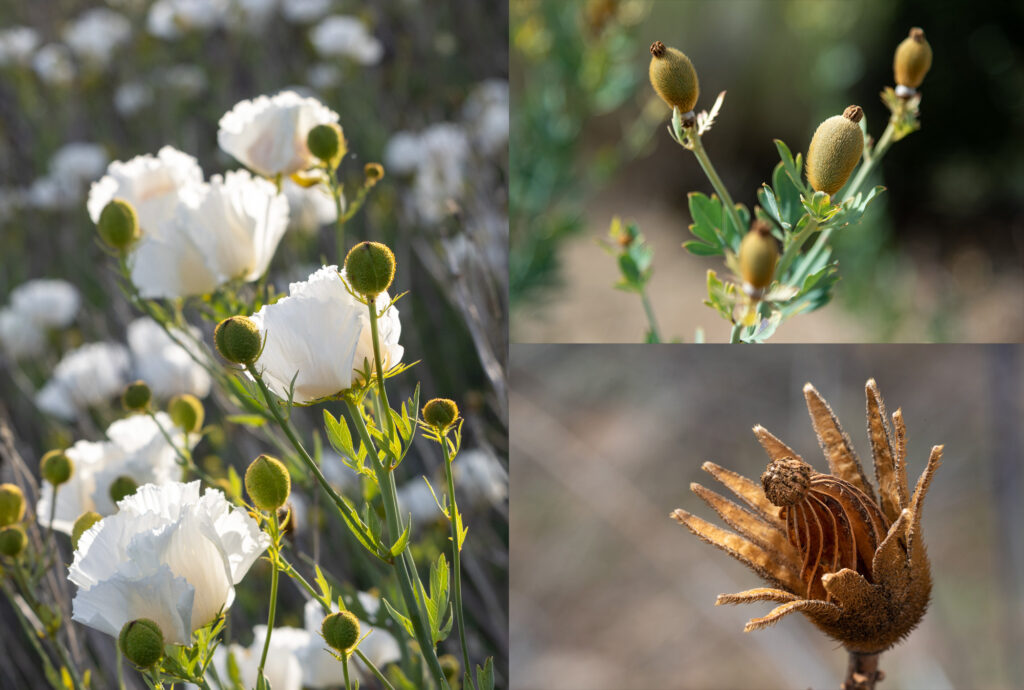
Flowers eventually give way to bristly oblong fruits that look something like a small, unpeeled kiwifruit. These fruits dry out during the summer, and by fall they crack open to reveal a cache of tiny black seeds inside. The seeds are jostled out of the seed pod by the wind or wildlife.
The primary difference between the two species of Matilija poppy has to do with their sepals, which are leaf-like parts of the flower usually found below the petals. The hairy matilija poppy’s three sepals are bristly while those of the Coulter’s are completely smooth.
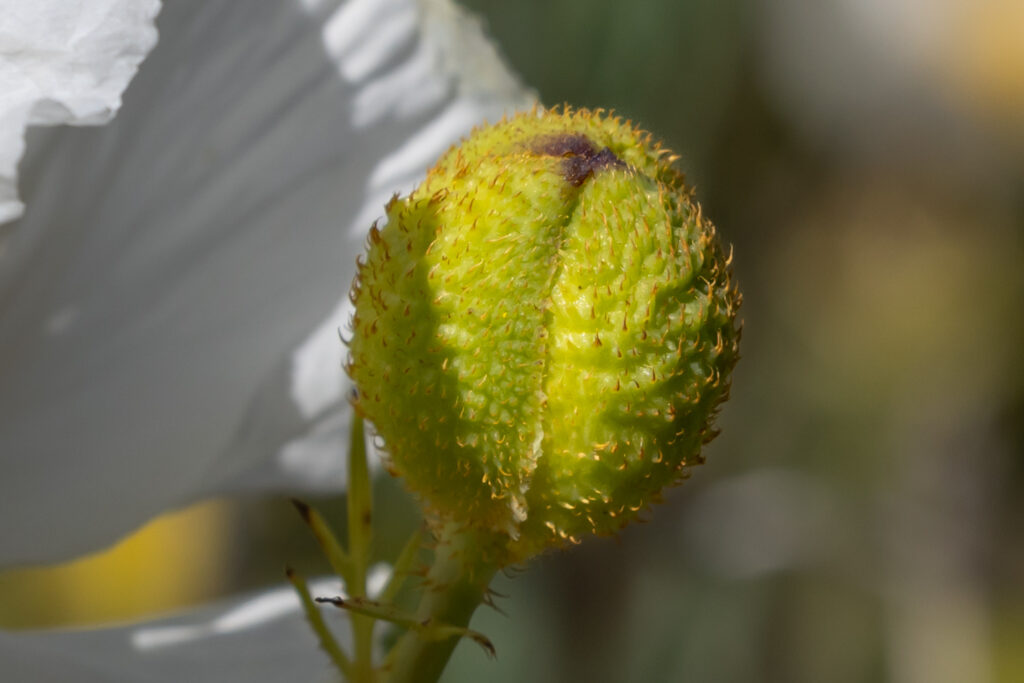
Without the sepals, it’s very difficult to tell the species apart, but these appendages tend to fall of the plant fairly soon after the flower has bloomed. So the best time try to identify the species is when the giant flower buds are present in the spring but haven’t opened yet. These buds are enclosed in the sepals themselves, so it’s easy to see whether they have bristles at this stage.
Importantly, both plants may be confused for the related prickly poppies (Argemone spp.), which are smaller and bristly all over the stem and leaves. Some prickly poppy species, often called chilacote, have flowers that are nearly identical to albeit smaller than those of the Matilija poppies. Prickly poppies are also much more wide-ranging, found in the Sierra Nevada and Great Basin as well as across southern and central California. They are usually in drier, sandier areas such as those found in northern Ventura County.
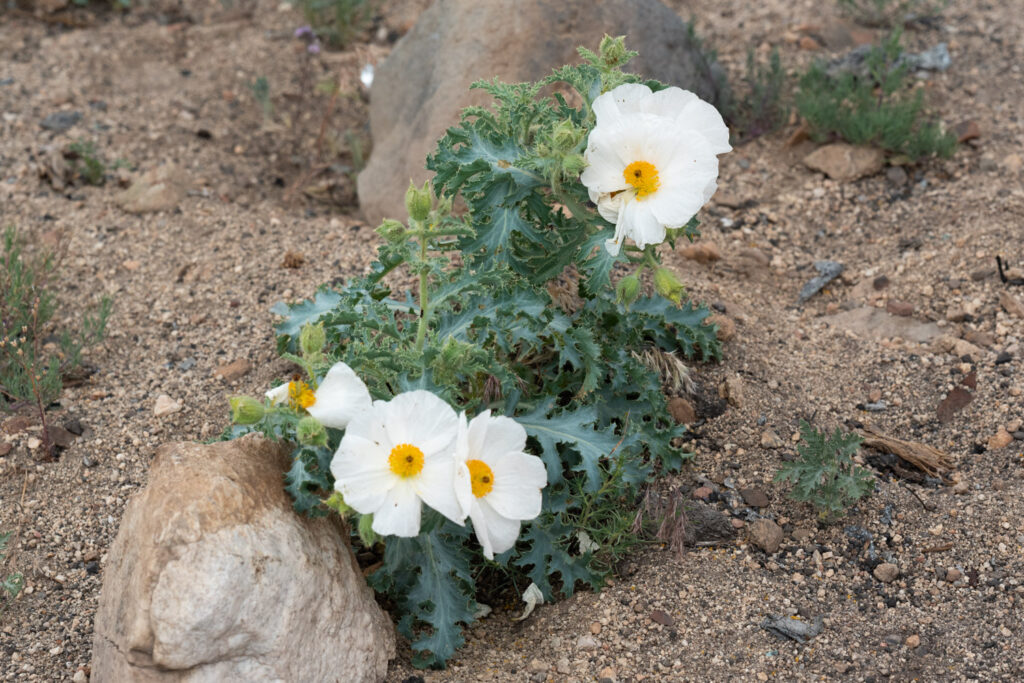
Distribution and Fire Ecology
Both species are found naturally in the Transverse and Peninsular Ranges of southern California as well as in northern Baja. In the Los Padres National Forest, hairy Matilija poppy is especially common along State Route 33 from Ojai to just north of Pine Mountain. They are also found in the Sespe Wilderness as well as, perhaps unsurprisingly, the Matilija Wilderness. Coulter’s Matilija poppy on the other hand is relatively rare in the Los Padres and found more commonly farther south.
Matilija poppies are typically found in chaparral and coastal sage scrub, especially in the early years after a wildfire. Seed germination is stimulated by chemicals in smoke which leach down through the soil during the rainy season after a fire. These plants are perennial and die back each year before sending up vigorous new growth from roots and rhizomes in the spring. They can also easily spread via rhizomes, which are just horizontal plant stems that are usually underground.
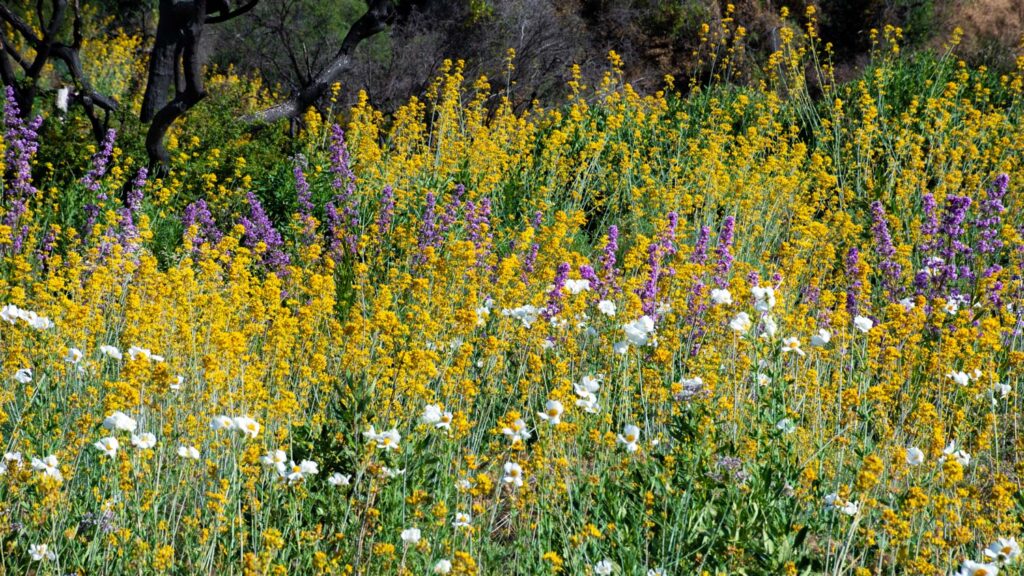
History and Conservation
The Matilija poppy has long captivated humans in the region. The common name may have its origins in tales about the fictional Chumash character, Chief Matilija. Julie Tumamait-Stenslie wrote:
We grew up hearing about Chief Matilija and his group of warriors who tried to fight off the ever-present armies. In the myth, the story goes on to tell of Chief Matilija’s daughter, Amatil, who was very much in love with the handsome warrior, Cocopah. Tragically, he was killed in the final battle. Amatil’s love was so deep and so pure that she she laid upon her lover and there she died. What remained of that love was a beautiful flower with pure white petals symbolizing their love and a yellow center to represent the everlasting brilliance of their love. We know this flower as the Matilija Poppy.
My Chumash Ancestral Legacy
While the common name has an Indigenous etymology, the scientific name is a different story. Romneya is named after Irish astronomer Dr. Thomas Romney Robinson, who was friends with fellow Irishman and botanist, Dr. Thomas Coulter. Coulter first collected and scientifically described the species in the early 1830s while in California with another famous botanist, David Douglas. You may recognize the names Coulter and Douglas, as many plants native to California and elsewhere in western North America are named after them such as our local Coulter pine, the Douglas-fir, Coulter’s jewelflower, blue oak (Quercus douglasii), and many others.
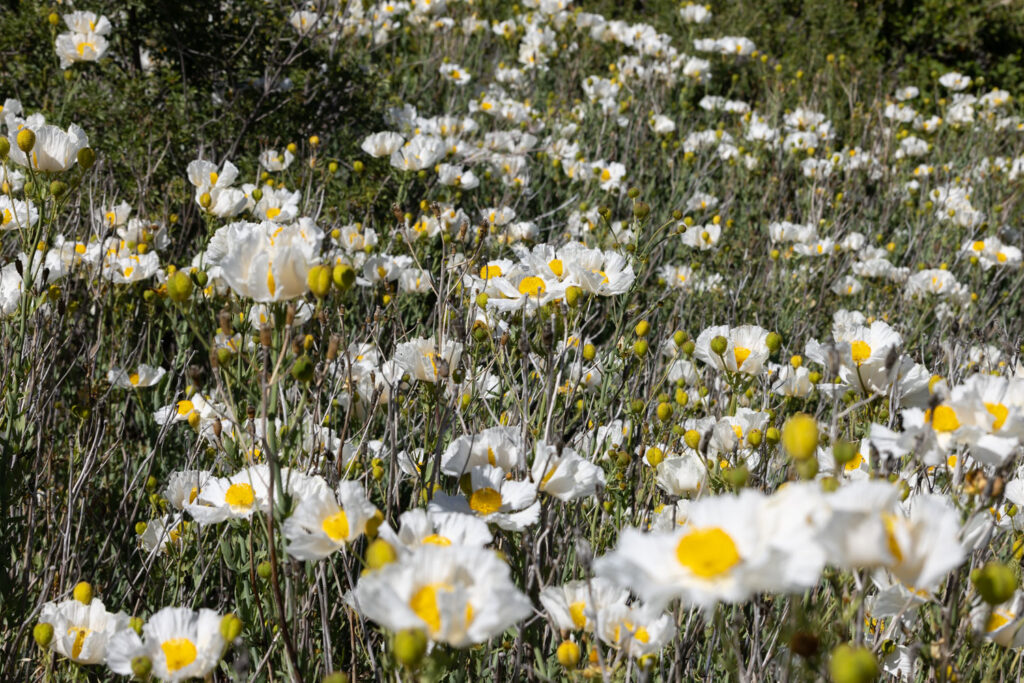
The Matilija poppy may not receive as much attention as the more widespread California poppy, but in 1890 it was nominated to be California’s state flower during an election held by the California State Floral Society. The other contestants were the mariposa lily and the California poppy. The latter easily won the election and officially became the state flower in 1903. But the Matilija poppy remains a staple in native plant landscaping as well as art and plant photography. There’s even a statue of the plant in downtown Ojai.
Matilija poppies are not listed as sensitive, threatened, or endangered, and they appear to be doing well where found. But like many other plants native to the chaparral and coastal sage scrub, these species may be impacted by the spread of non-native plants, overly frequent fire, and general habitat loss.






